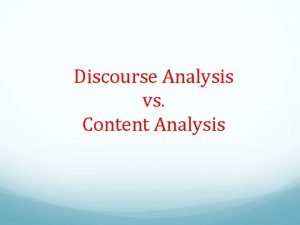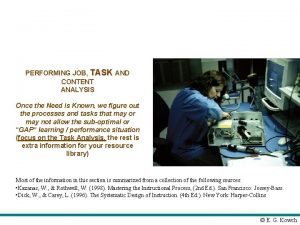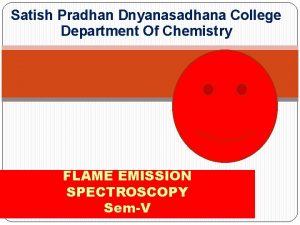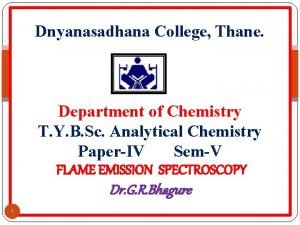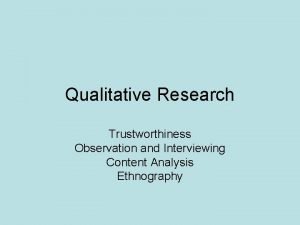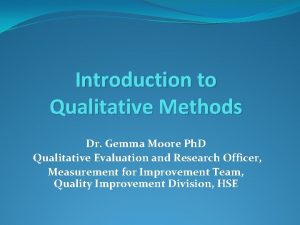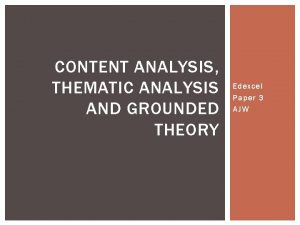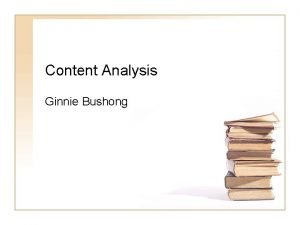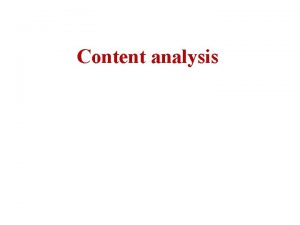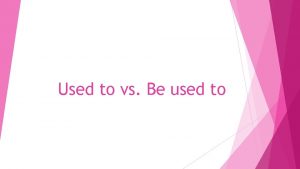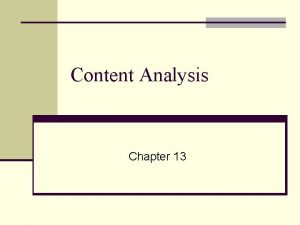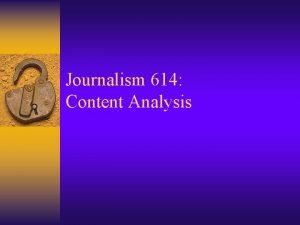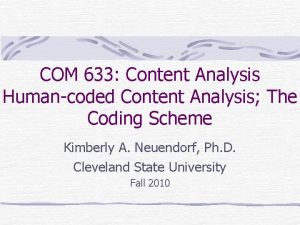Chapter 10 Content Analysis Content analysis is used













- Slides: 13

Chapter 10 Content Analysis • Content analysis is used to describe the content of artifacts created by human beings such as texts and audio/visual content © 2017 Taylor & Francis

Content Analysis As an empirical methodology, must adhere to the three basic principles of the scientific method. It must be: 1. Objective 2. Systematic 3. The results must be generalizable © 2017 Taylor & Francis

Content Analysis • This method analyzes the permanent record of a phenomenon, such as: • Texts (e. g. , newspaper articles, speeches, love letters) • Audio/visual content (e. g. , television shows, recorded interpersonal interactions, songs) • We describe by observing and counting selected characteristics of the content under study (the sources of “data” are referred to as texts) © 2017 Taylor & Francis

Conceptualization Identify and define which text will be analyzed: 1. Which data are analyzed? 2. How are they defined? 3. What is the population from which they are drawn? © 2017 Taylor & Francis

The Unit of Analysis • The thing that is actually observed or counted • Selecting the unit of analysis is extremely important because it is used to identify what we will be observing and coding in our study © 2017 Taylor & Francis

Units • In content analysis, part of the conceptualization process is selecting the appropriate text for the study • Unit of observation: the units through which the data are collected © 2017 Taylor & Francis

Units • Sampling unit: the whole independent message used for the basis of sampling • Separable by physically identifiable boundaries • Completely independent of each other • Recording unit: components of the message that can be divided into separate components or categories © 2017 Taylor & Francis

Sampling • In content analysis, sampling is influenced by the type of text we have selected to observe • Target universe: the group of things we are interested in studying (similar to the population in survey and experimental research) • Sampling is a process used to create a sub-group of the target population or universe © 2017 Taylor & Francis

Coding Scheme • Coding scheme: the classification system used to classify messages; provides instructions on how to code or observe the text • Coding: the process by which researchers convert unobserved texts into a form that allows for comparison by statistical analysis © 2017 Taylor & Francis

Coding Scheme Variables • Variables must be: • Mutually exclusive: the variables must have responses that correspond to the data and allow the researcher to categorize the data into one and only one category • Relatively exhaustive: the categories must be inclusive enough for the researcher to be able to record (nearly) all observations © 2017 Taylor & Francis

Two Types of Variables • Manifest variables: can be easily observed and tend to be more objective and reliable • Latent variables: are more subjective and are more challenging to code but can be more valid (represent the concept more accurately) than manifest variables © 2017 Taylor & Francis

Intercoder Reliability • The extent to which independent coders ( the people who observe and categorize the data) evaluate a a characteristic of a message or artifact and reach the same conclusion as the other independent coders © 2017 Taylor & Francis

Computer-aided Coding • There are numerous computer-aided content analysis programs • The most common type is Computer Aided Text Analysis (CATA) • Pros: automated searches; process data quickly and more cheaply than human coders; removes subjective judgments • Cons: not as useful for coding complex concepts or visual samples; failure to recognize multiple meanings and context can contribute to measurement error © 2017 Taylor & Francis
 What is esp
What is esp Static content vs dynamic content
Static content vs dynamic content Discourse vs content analysis
Discourse vs content analysis Difference between task analysis and content analysis
Difference between task analysis and content analysis Content analysis is a type of secondary data analysis
Content analysis is a type of secondary data analysis In a premix burner used in fes the fuel used is
In a premix burner used in fes the fuel used is In a premix burner used in fes the fuel used is
In a premix burner used in fes the fuel used is How to do an ethnography
How to do an ethnography Latent coding example
Latent coding example Inductive content analysis
Inductive content analysis Difference between thematic and content analysis
Difference between thematic and content analysis Content analysis objectives
Content analysis objectives Content and discourse analysis
Content and discourse analysis Marketing content analysis
Marketing content analysis


